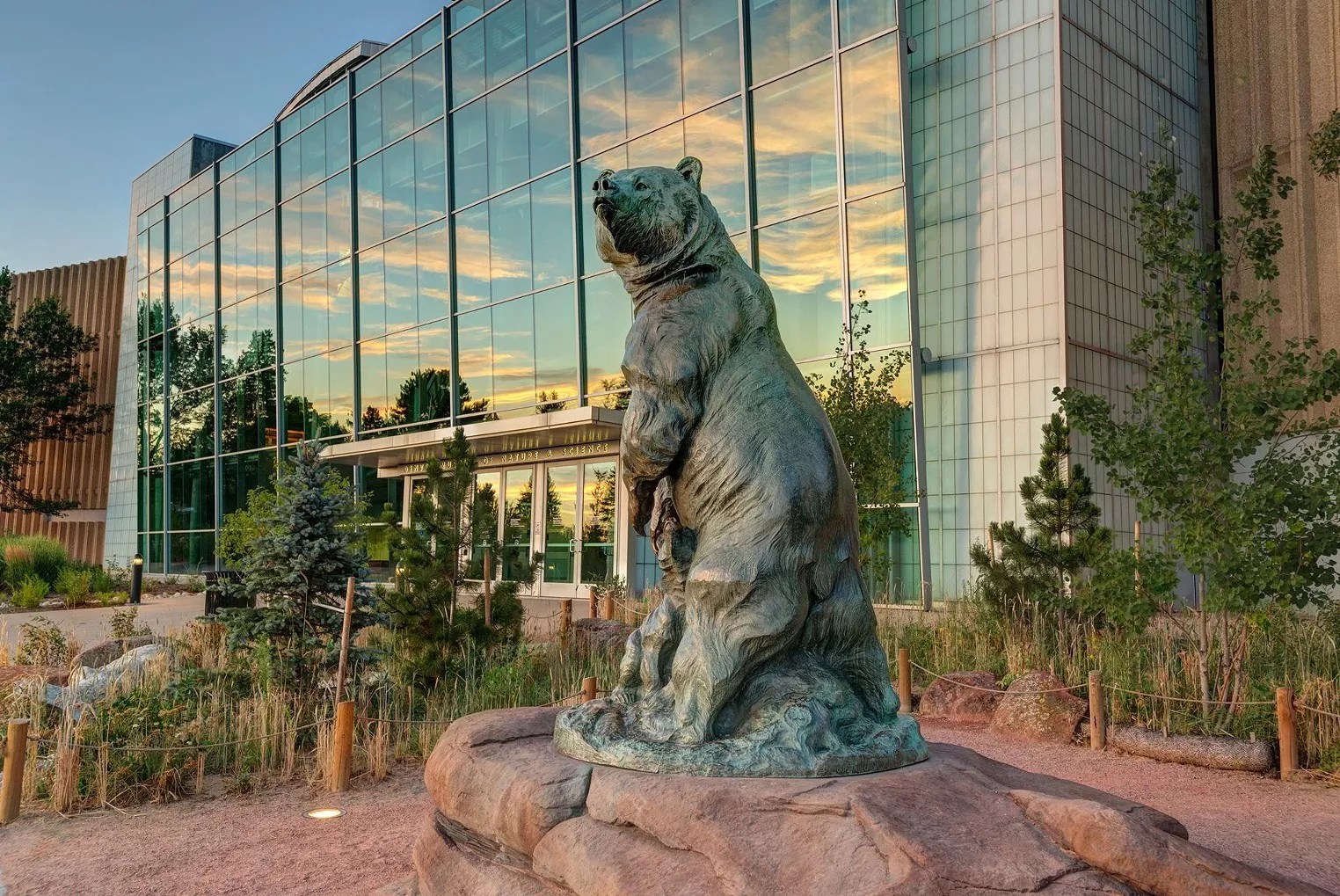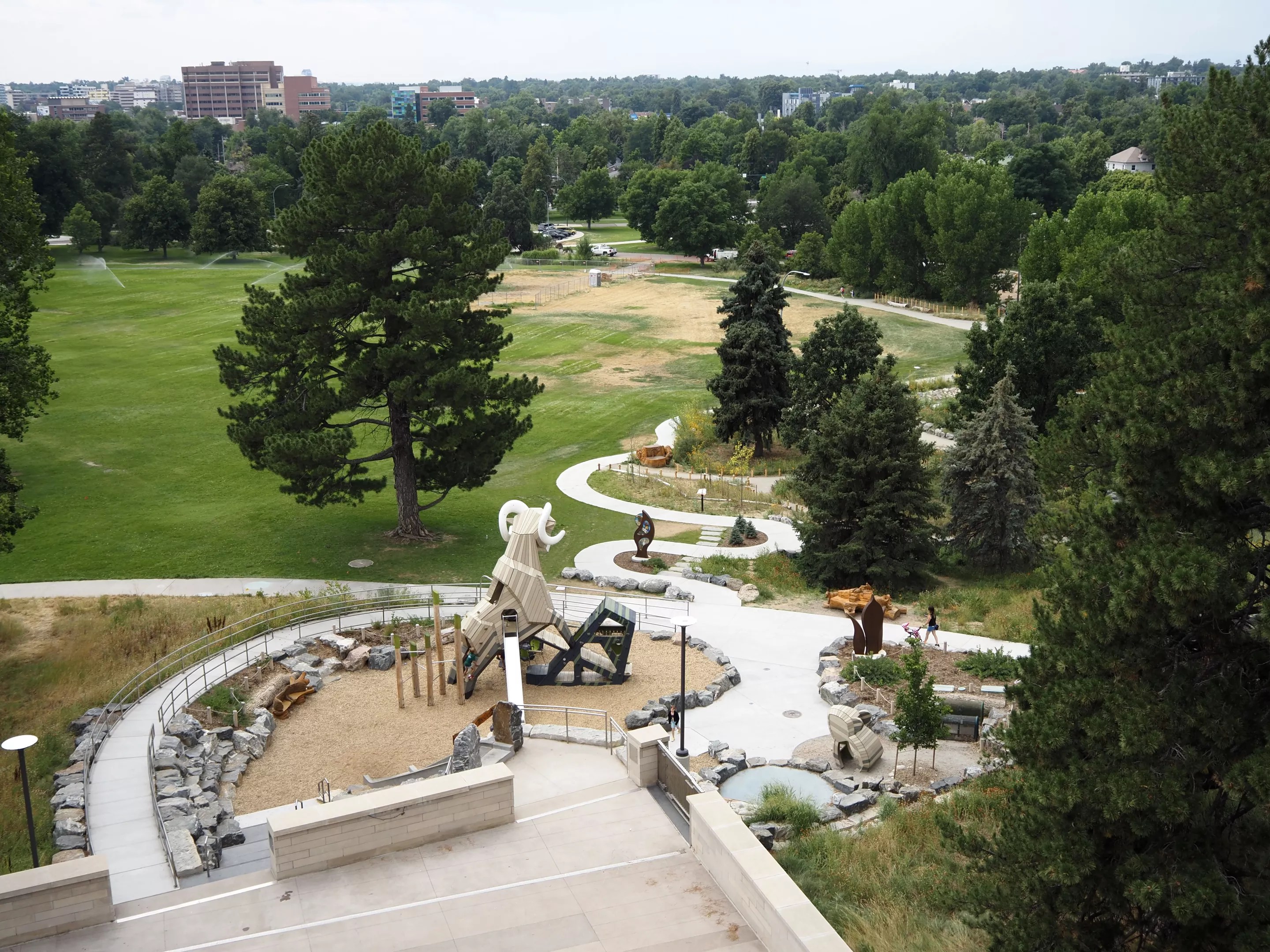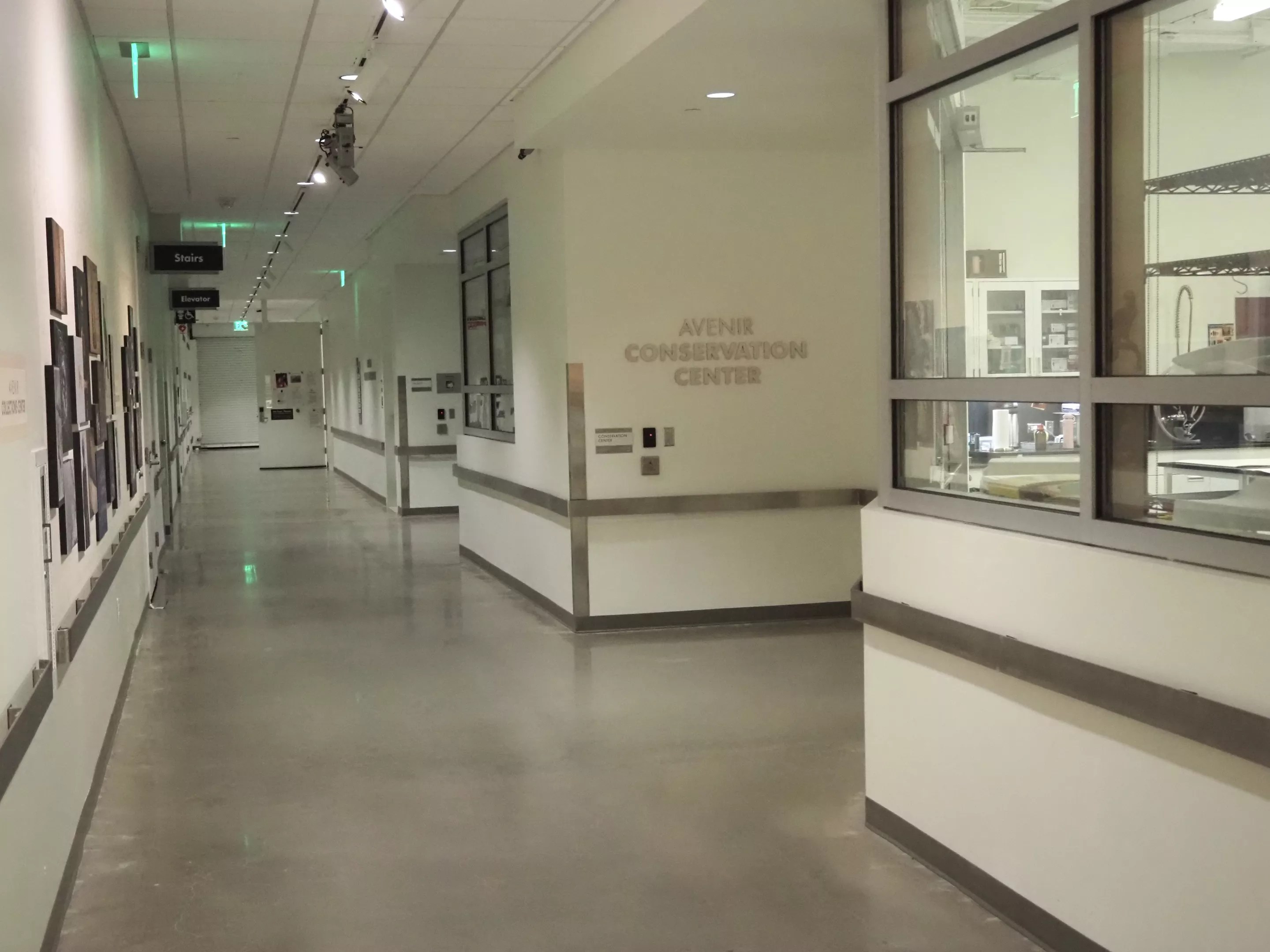
Richard Wicker/DMNS

Audio By Carbonatix
The Colorado Museum of Natural History started out in 1900 with the Edwin Carter Collection of taxidermied birds and mammals, plus some butterflies, moths and crystallized gold, in a modest display in Denver. Colorado had only become a state 24 years prior, the city’s population was just shy of 134,000, and City Park was a shortgrass prairie. Today, Denver is home to more than 700,000 people and the Denver Museum of Nature & Science spans more than 711,000 square feet in a City Park complex that holds more than 4.3 million objects and operates on a $52 million annual budget.
On August 8, DMNS will celebrate its 125th birthday with the Galactic Gold Celebration, a cosmic cowboy event that symbolizes its plans to keep exploring new frontiers.

A replica of the museum building when it opened in the early 1900s. Today, DMNS is made up of fourteen buildings.
Kristen Fiore
In his dedication address, John Campion, the first president of the museum’s board, said that “a museum of natural history is never finished.” He wasn’t wrong.
Denver, make your New Year’s Resolution Count!
We’re $14,000 away from our End-of-Year campaign goal, with just a couple of days left! We’re ready to deliver — but we need the resources to do it right. If Westword matters to you, please contribute today to help us expand our current events coverage when it’s needed most.
The museum has expanded more than a dozen times since opening its doors at its current City Park location in 1908; today it comprises fourteen buildings, according to Vice President of Operations Jeff Joplin. But the goal has stayed the same. “It was about bringing nature and science to the community,” Joplin says. “That really hasn’t changed over time.”
Over the years, numerous discoveries and advancements have put the museum on the international map.
In 1908, George McJunkin discovered an archaeological site in Folsom, New Mexico, that proved people had lived in North America hundreds of years earlier than previously believed. Eventually, a crew from the museum unearthed stone projectile points and the bones of an extinct bison species there, which propelled the museum to the forefront of archaeological research.
The museum’s original wildlife dioramas got a facelift in the late 1930s, when staffers traveled to six continents to collect specimens and workers re-created the habitats using a curved panoramic shape, painted backgrounds, carefully crafted reproductions and special lighting. “The Denver Museum of Nature & Science dioramas are some of the best in the world and are very popular with our guests,” Joplin says. “We continue to update them with new content, graphics, lighting, technology and hands-on interactions.”
The original planetarium opened in 1955 and went through multiple moves and renovations, but has always been tremendously popular across all audiences, Joplin says. DMNS celebrated its 75th anniversary in 1983 with the opening of Colorado’s first IMAX theater (today the Infinity Theater).
In 2010, a bulldozer operator working near Snowmass Village unearthed the remains of a Columbian mammoth. Curators from DMNS headed to the site to dig deeper and found the ground packed with the preserved fossils of Ice Age animals.
It seems these kinds of things happen frequently in the region. A few years ago, a group of children discovered a juvenile T. rex fossil in North Dakota and enlisted the help of their hometown hero, DMNS paleontologist Tyler Lyson. Discovering Teen Rex is now an exhibit where museum-goers can watch paleontologists clean, preserve and study the fossil before it is displayed on the museum floor.
And just last month, the museum announced that it had found another dinosaur fossil far beneath its own parking lot during a geothermal test drilling project.
More than a million people visit the museum to see these attractions and more each year. DMNS has a large membership – 47,000 households – and the local lore is that one volunteer started the membership program with a system of handwritten names on index cards.
While the museum has added a new building roughly every decade, Joplin says there are no plans for another at this time. Instead, DMNS is focusing on making improvements to the space it has. Last year, the museum partnered with Denver Parks & Recreation to open Nature Play, a four-acre immersive outdoor experience in City Park that teaches people about Colorado’s different environments.

DMNS partnered with Denver Parks & Recreation to open Nature Play, a 4-acre immersive outdoor experience in City Park
Kristen Fiore
Meanwhile, the East Wing Project is underway. This $20 million renovation will rejuvenate the museum’s historic theater, lobby and plaza. The area is expected to reopen next summer.
The Coors Hall of Gems & Minerals, which has been a favorite permanent exhibition since it opened in the ’70s, will soon be getting a facelift. It will be shut down early next year for the renovations, which will redesign the exhibit based on community feedback. “We heard from our community that they want hands-on experiences and immersive environments,” Joplin says. Unique environments, caves, a modern mine and interactive information about Colorado’s geology will be added during a project expected to take a year.
Deep under the museum, geologists are busy organizing more gems and minerals that will be on display in the revamped exhibit. The rocks are stored in the Avenir Collections Center, a large space where DMNS keeps acquisitions that aren’t currently on display. The center was completed in 2014, and allowed DMNS to move its collections from about fifty places around the museum into one state-of-the-art location underground.

The Avenir Collections Center was completed in 2014, allowing DMNS to move its collections from about fifty places around the museum into one state-of-the-art location.
Kristen Fiore
Those who purchase $500 VIP tickets to the Galactic Gold Celebration will get access to the Avenir Collections Center. “We’ll have our scientists and curators showing our guests different selected collections items that might tie into the theme of our event and highlight our history here at the museum as well,” says Lauren Whynott, director of donor engagement and membership.
Otherwise, general admission tickets are $150 for the event that will blend the spirit of the West with the optimism of the space age for a 21+ evening of themed food and drinks, science experiments and demonstrations throughout the museum, DJs and more. Western or cosmic attire (or both) is encouraged.
As people continue to come to the museum, Joplin hopes the exhibits will inspire them. “We have guests who come here and oftentimes they reflect, ‘I came here in second grade on a field trip,’ and there’s that connection that lasts throughout folks’ lives and gets passed on generationally,” he says. “When there’s an opportunity to connect about the natural world, it helps us appreciate our place in it.”
Celebrate the Denver Museum of Nature & Science’s 125th birthday at the Galactic Gold Celebration, 7 to 10 p.m. Friday, August 8, at 2001 Colorado Boulevard; get tickets here.